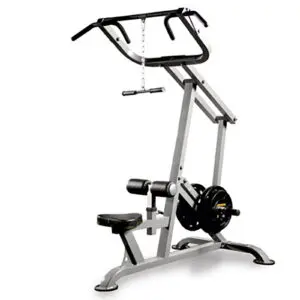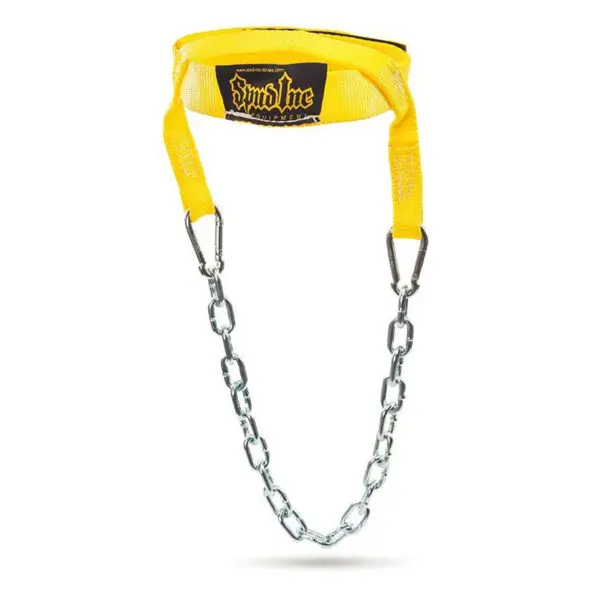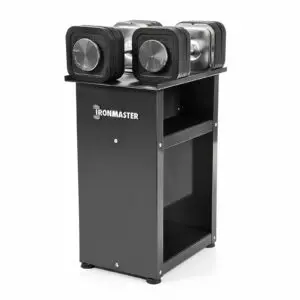
 Neck
Neck
STRONG NECK EQUALS A HAPPY SPINE
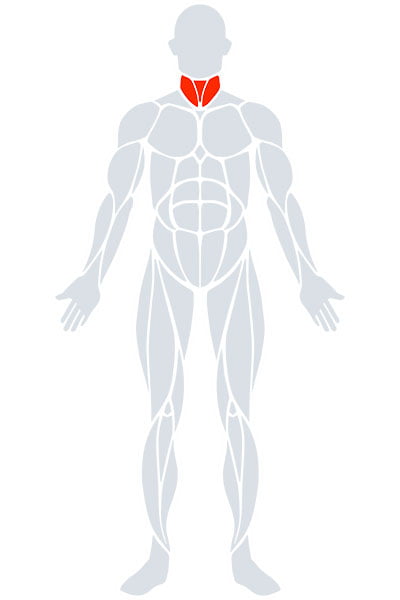
Best equipments for Neck
-
Spud Neck Harness
$125.00Select options This product has multiple variants. The options may be chosen on the product page
Neck
Frequently Asked Questions

 How should I train my neck muscles?
How should I train my neck muscles?
You need to train your neck in different ways to get the best results.
For neck extension training, you need to extend your neck by looking up towards the ceiling. For neck flexion, you need to bend your head down so your chin touches your collarbone. Moving your head from side to side, that is, by bending your head toward one shoulder and then the other, is what lateral flexion training is about. Lastly, twisting your neck and looking over your shoulders are moves that fall under neck rotation training.

 How often should I train my neck?
How often should I train my neck?
Train your neck about 1 to 3 times each week to see faster results. It’s also important that you warm up properly before you do any of the neck workouts and exercises that I’ll be sharing with you in a while. The last thing you want is to pull something in your neck and not be able to move it (and your head) for 2 weeks!
When it comes to neck size, here’s what you need to remember: it’s not a “one-size-fits-all” kind of thing. The size of your neck needs to be proportional to the size of the rest of your body. If you’re serious about building your body, you need to be serious about building your neck, too.

 Why is neck training important?
Why is neck training important?
Now, I might burst someone’s bubble by saying this, but it’s important so I’ll say it anyway: building a thick neck isn’t just about looking good. A big and strong neck can protect you from injury and reduce your neck pain, which is very important if you play contact sports like Australian football, boxing and rugby league.
A strong neck can also improve your balance and movement. This is because nerve impulses run from your body to your brain through your neck. It can also improve your breathing because the muscles in your neck aid in respiration. Now you know why a neck injury is more than a pain in the neck, but also a pain for your whole body!

 What are the best neck workouts and exercises?
What are the best neck workouts and exercises?
Ready to transform your scrawny neck and make it look like the Hulk’s?Let’s get right into it.
1. The neck rotation
You’ll need a closed-loop resistance band for this one. Attach one of the band’s ends to a power rack or pole and then place the other end across your forehead, just above your eyes. Step away so that the band is tight and creates a moderate pressure on your head. Keep your back and neck straight and then look over your shoulder, pause and then return to your starting position. Do 2 sets of 25 reps of these. Once you have finished with one side, switch it up and do the other.
Remember, it’s up to you to decide how much resistance you’ll be working with. If you’re feeling pain, lower the rep or resistance.
2. The neck flexion
Lie down on a bench but keep your head hanging from one end. The bench should only support your entire back, hips and thighs. Plant your feet on the floor. Place a folded towel on your forehead and place a weighted plate on top of the towel. Flex your head upwards until your chin touches your chest or collar bone, then move your head back again for a comfortable stretch. Do 3 sets of 20 reps for this one.
For this and any other neck exercise on this list, always start off with light weights and then work your way up. If you feel that you need to cut down on the weight, do that. You can gradually add more weight as you become stronger. Focus on perfecting the execution of this move, rather than trying to get your reps or weights up. Above all, don’t use jerking or explosive movements that could lead to injuries.
3. The neck extension
Now let’s move onto the neck extension. Lie face-down on your bench, but make sure only your chest, hips, thighs and arms are supported by it. Make sure your shoulders don’t touch the bench. Lift your head so your neck forms a straight line with your spine. Hold for 10 to 20 seconds, then lower your head again. Do 3 sets of 20 reps for this one.
It’s best to do this exercise without using any weights at first so you can focus on perfecting your form. Once you got that down, then you can add as much weight as you feel comfortable with. If you don’t have any weight plates, you can also use a resistance band to give you the resistance you need.
4. The neck lateral flexion
I suggest you do this exercise standing up with your feet shoulder-width apart. Place your left hand on the top-right side of your head and bend it down towards your left shoulder. Hold for 10 to 15 seconds before straightening your neck again. Then you can switch sides and use your right hand, place it on the top-left side of your head and bend your head towards your right shoulder. Do 2 sets of 15 reps for both sides. Just as with the other exercises, make sure your form is good and that you’re not using any explosive or jerky movements.
5. Traps exercises
Any exercise that works your traps (the muscles that start from the bottom of your skull and extend to the middle of your back) will also work your neck because the top of your traps and your neck are one and the same! Take your pick from barbell upright rows, dumbbell bent-over raises and cable face pulls.
6. Barbell shrugs
The name pretty much says it all: you just need to hold a barbell and do a shrug! Stand with your feet shoulder-width apart, grab a barbell and keep both hands just outside your thighs. Raise your shoulders as high as possible without rotating them to the back. Make sure the weight on your bar is manageable because you need to hold this position for about 5 seconds before you lower your shoulders again. Do not lean over to one side when you’re doing these or you could end up with muscle imbalance. Do 3 sets of about 12 reps.
7. Dumbbell shrugs
The only difference between dumbbell shrugs and barbell shrugs is the equipment. Same with barbell shrugs, you need to stand tall and keep your legs shoulder-width apart. Grab a pair of dumbbells, holding one on each hand and placing your arms to the sides. Then raise your shoulders as high as you can. Do not use your biceps to lift the dumbbells. Again, about 3 sets of 12 reps should do the trick here.
You don’t need to use dumbbells or any other free weights when you’re just starting out. You can do the exact same workout without them, but if you’re aiming for big gains, then you need to go big or go home.

 What's the best workout equipment for my neck?
What's the best workout equipment for my neck?
You don’t really need a ton of equipment to get your neck bigger and stronger. Here are my top five neck exercise equipment that will do the trick:
1. Resistance bands
You can work your neck muscles really well with the help of quality resistance bands. It’s best to get a set of bands with different resistance levels so that you can start out with a lighter resistance and then work your way up. These bands are great, especially for those who don’t want to use weights or fear weights might put too much strain on their neck.
2. Dumbbells
Dumbbells are great for just about any and every type of workout, including the neck. They are obviously a must for dumbbell shrugs and dumbbell bent-over raises. To avoid getting a neck strain, start with lighter weights and then work your way up.
3. Barbells
You need a barbell for the barbell shrug and barbell upright rows, which are two of the most effective neck and traps exercises. Just like dumbbells, start out with lighter weights and then move on up.
4. The neck harness
Wear this harness over your head like a hat with the two horizontal strips of cloth placed right on top of your head and along your forehead. It comes with chains or straps on both sides that hold free weights. You can use the neck harness in many ways, one of which is in the squatting position where you bend your head down to the floor and then lift it again. Do not bounce or you could end up smacking your head with the weights!
5. Neck extension machine
Before you use this machine, you need to set your desired weight and adjust the seat first so your head will fit securely on the head pad. Sit down and hold on to any of the four handles as you do your lateral (sideways), backward and forward neck extensions.
Am I asking you to break your neck in order to strengthen it? Yes, but not literally, of course! As I said in my intro, you really need to work hard if you want to have a big and strong neck to support that good head of yours. But you also have to take any pain in your neck seriously. If there’s one body part you don’t want to injure, it’s your neck—just ask any person who has ever worn a neck brace or cervical collar! My tip is to start light and do the neck exercises with the proper form so you can strengthen your neck without suffering the agony of neck injuries.

 How to Train your Neck?
How to Train your Neck?
The Neck is a stubborn muscle – it’s used to carrying around your big brain all day. It’s the same as how it’s hard to grow your calves because they’re used to carrying our whole bodyweight all day. As such, high reps and lots of volume are commonly prescribed in a neck training program.
A good starting point would be 4 sets of 25-30 reps, using a weight you can control through a full range of motion. The neck muscles recover fast too, so you can train your neck 1, 2 or 3 days a week! Maybe more as you get more advanced.
There’s no need to do complicate exercises to grow your neck either. Neck Curls and Neck Extensions are your bread and butter. They can be done individually or ‘super-setted’, in the same workout or in separate workouts. It doesn’t matter, as long as you train neck regularly.
You can use weight plates, resistance bands, or a neck harness. Use what you have and what you enjoy/feels best for you. In fact, you don’t even have to train your neck with direct exercises if you don’t want to!
Good compound exercises like the deadlift and overhead press will build them up. But if you want those extra few thick inches of girth around your neck adding some neck specific exercises will be a great benefit. Especially if you’re a contact sports athlete, bodybuilder or someone who uses rapid, repeated neck movement in their line of work.
Neck training can be a valuable tool to add into your training for injury prevention, aesthetics and bedroom performance.

 Does Deadlift work Neck?
Does Deadlift work Neck?
Yes, Deadlifts will work your neck. More specifically, the back of your neck or trapezius muscles, which are basically your neck. An athlete that packs a decent deadlift will more than likely have some impressive girth, even on their neck.
The trap muscles connect to the base of your skull, and the traps response very well to a ‘weighted stretch’ I.e. holding heavy weight in your hands. If you are deadlifting a weight that you find heavy, this will be a good stimulus for your neck and traps. This encourages them to grow.
So, for those short of time who don’t want to do isolation exercises for the neck, such as neck curls and neck extensions, the deadlift is a great compound movement to include in your training. They’ll build basically every other muscle in your body too.

 Is Neck Size Genetic?
Is Neck Size Genetic?
Like all muscles, neck size is highly genetic. This is the same as height, shoe size, shlong size etc – it’s all genetic. Some people are born with a BMG 12.5”, some are born with a SMG 1.5”. Unfortunately, there’s not a lot we can do about it. HOWEVER, just because some people are born with a small neck doesn’t mean you can’t grow what you have!
Again, some people are born with a big neck and no matter how much training they do, it won’t grow any bigger. But some people may be born with a small neck that would grow fast if they started training it consistently. There’s no way of knowing whether your neck will grow or not unless you train it.
Same as you won’t know whether you’ve got good muscle building genetics for your arms unless you train them, hard and often. So don’t use genetics as an excuse for your small neck, and don’t compare yourselves to others either!
Train as hard, as thick and as often as you can recover. Aim to be a bit girthier than you were yesterday, last week, or last year. Progress is progress – trust it!

 Does Neck Training cause Sleep Apnoea?
Does Neck Training cause Sleep Apnoea?
It’s well documented by bulked up YouTube influencers that having a thick neck can cause some sleeping difficulties, including sleep apnoea. This is basically because there is more fat and/or muscle around your throat and airways. This prevents air from coming in creating difficulties breathing when sleeping. As you are asleep and not consciously aware of any breathing issues.
This doesn’t mean Neck Training is guaranteed to cause sleep apnoea. If you train your neck but stay at a healthy body fat percentage, your chances of developing sleep apnoea would go down drastically. So just focus on training hard and eating enough to remain healthy and relatively lean – don’t bulk too hard now, mate!

 Is Neck training Safe?
Is Neck training Safe?
As we’ve talked about before, any activity done in a reckless or dangerous manner will be unsafe. If you drive too fast, drink too much, or go walking late at night around BMG’s turf, you’re probably going to wind up getting hurt. BUT, if you aim to train your neck safely, using a progression and/or weight you can do in a controlled manner, with a full range of motion, there is nothing inherently dangerous about neck exercises.
It’s worth noting that exercises like neck curls and neck extensions are viewed as much safer than ground-based neck exercises, such as Neck Bridges. It’s got something to do with the type of force and compression you’d be putting on your spine by rolling around on your head, with your full body weight.
I’d say that makes sense, but athletes like Mike Tyson did them and he’s fine, right? So, if you want to be super safe with neck training, avoid the neck bridge, but stick to the neck curls, extensions, and isometric holds – the neck will still grow without bridges!

 Does training Neck improve your Jawline?
Does training Neck improve your Jawline?
Neck training will make your neck muscles grow bigger, over time. However, the jawline is a bone, not a muscle. You can’t make your jaw bones bigger by doing resistance exercises. Instead of focusing on using weights to grow your jaw muscles or worrying too much about ‘mewing’ all the time, try to lose some weight first!
You see, people with a weak jaw line usually have a layer of fat covering their jaw bones. If you lose weight, you’ll reveal that jawbone as you get leaner. That’s the best way to get a stronger jawline – by losing weight.

 Does training your Neck deepen your Voice?
Does training your Neck deepen your Voice?
Debatable. There’s some studies and fitness influencers I’ve seen who claim neck exercises have made their voice deeper. However, Mike Tyson had a 19–20-inch neck and one of the highest voices in all American Sports. Therefore, neck training does not guarantee a deep voice.
A deep voice is primarily genetic, and your voice will probably get deeper with age, too. So, neck curls and extensions will probably not make your voice deeper, but like anything, we get good at what we repeatedly do. If you practise talking with a deep voice, over time, you’ll strengthen your deep neck muscles (the ones you can’t see) and you’ll be much more likely to get a deeper voice.
Neck Training Tips


ATX-PRX-620 Power Rack Comparison

Leonel’s ATX PRX-750 Power Rack Review
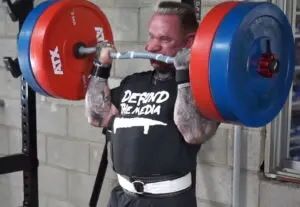
25 EZ Curl Bar Exercises
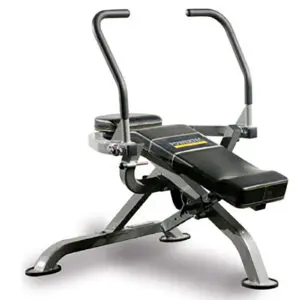
L-MC Powertec Leverage Maxi Crunch/Core Trainer
